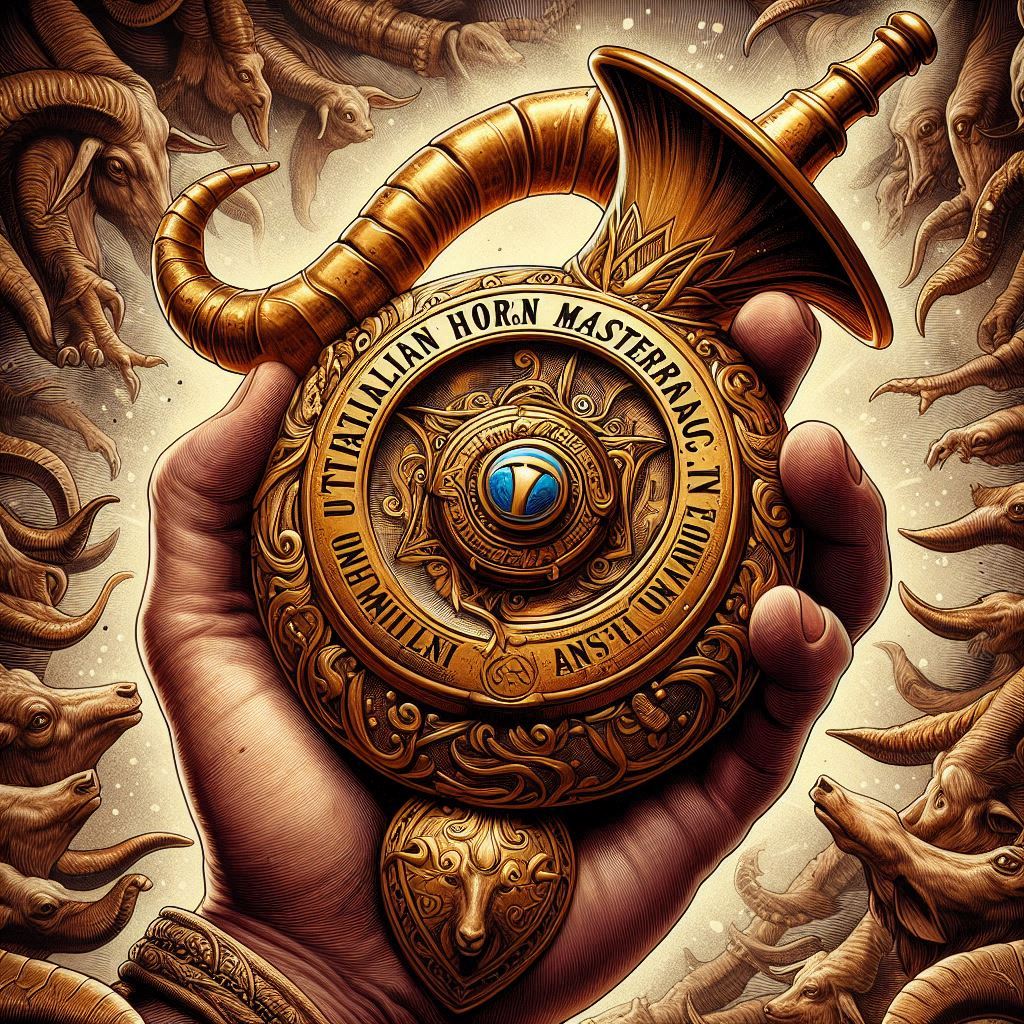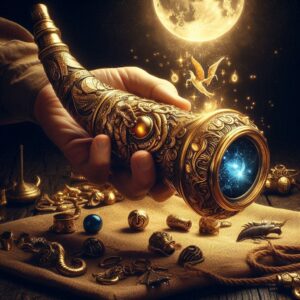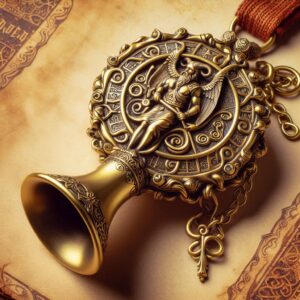
The Italian horn, or cornicello, is a revered cultural talisman deeply embedded in Italian lifestyle, celebrated for its capability to keep off evil and entice accurate fortune. This horn-fashioned amulet, often made from coral, gold, or silver, is greater than a ornamental piece—it’s a image of protection, strength, and historical past. This comprehensive manual delves into the Italian horn’s history, cultural significance, sensible makes use of, and actionable strategies for incorporating it into your life. Whether you’re a newcomer intrigued via its mystique or a seasoned enthusiast in search of deeper insights, this text offers precious pointers to harness the cornicello’s timeless energy.
The Historical Roots of the Italian Horn
The Italian horn lines its origins to ancient Italy, especially the regions of Campania and Naples, in which it emerged as a protecting appeal in opposition to the malocchio (evil eye). The evil eye, a curse believed to stem from envy or malice, become concept to bring misfortune, illness, or horrific luck. The cornicello, with its horn-like shape, come to be inspired thru animal horns, which symbolized power and fertility in pre-Christian traditions. Over time, it have turn out to be a staple in Italian tradition, mixing pagan roots with Christian symbolism.
The horn’s significance extends beyond superstition. In Southern Italy, it’s a badge of cultural satisfaction, often passed down through generations or talented throughout substantial life events like births, weddings, or baptisms. Its enduring recognition displays its twin position as a spiritual device and a stylish accent.
“The Italian horn is a bridge between historic beliefs and cutting-edge identification, sporting centuries of resilience in its fashionable curves.”
— Dr. Lucia Moretti, Italian Folklore Scholar

Evolution of the Cornicello
-
Ancient Origins: Linked to fertility gods and animal symbolism.
-
Medieval Influence: Adopted as a defense against widespread superstitions.
-
Modern Use: A global symbol of Italian heritage, worn as jewelry or displayed in homes.
Why the Italian Horn Matters Today
In an technology of rapid-paced residing and worldwide connectivity, the Italian horn remains relevant as a grounding pressure. Its shielding characteristics resonate with those searching for to protect themselves from negativity, whether non secular or emotional. Additionally, its aesthetic appeal makes it a flexible accessory, complementing each traditional and contemporary styles. For Italian diaspora communities, the cornicello is a tangible hyperlink to their ancestry, fostering a experience of belonging.
The Italian horn also appeals to a broader target audience inquisitive about spirituality and cultural artifacts. Its standard message of protection and prosperity transcends borders, making it a famous choice for jewelry lovers and creditors alike.
How to Choose the Perfect Italian Horn
Selecting an Italian horn requires careful consideration of materials, craftsmanship, and personal intent. Here are actionable strategies to guide your decision:
1. Understand Material Options
-
Coral: Traditionally crimson or purple, coral is prized for its organic splendor and spiritual potency. It’s sensitive but quite authentic.
-
Gold or Silver: These metals offer durability and elegance, ideal for daily wear or special occasions.
-
Bone or Horn: Rare but traditional, these materials connect to the amulet’s ancient roots.
-
Imitation (Plastic/Alloy): Budget-friendly but less spiritually significant; best for casual use.
2. Consider Size and Design
Small cornicelli (1–2 inches) are best for necklaces or bracelets, while larger ones (three–6 inches) fit home decor or vehicle displays. Choose a layout that displays your personality—minimalist for understated beauty or ornate for ambitious statements.
3. Prioritize Authenticity
Purchase from official assets, consisting of Italian artisans, cultural markets, or certified jewelers. Look for hand made pieces or those sourced from Naples, the heart of cornicello craftsmanship. Avoid mass-produced replicas that lack cultural depth.
4. Match to Your Intent
Decide whether your Italian horn is for protection, fashion, or heritage. For spiritual use, opt for coral or blessed pieces. For style, gold or silver offers versatility.
Practical Ways to Use the Italian Horn
The Italian horn’s versatility allows it to serve multiple purposes. Here are practical ways to integrate it into your life:
1. Wear It for Protection
Wearing a cornicello necklace, bracelet, or earrings keeps its defensive electricity near. Pair it with different Italian symbols, like a saint medallion or pass, to enlarge its spiritual effect. For most effect, put on it close to your heart or on the left aspect, a way of life believed to align with the frame’s electricity waft.
2. Protect Your Home
Display a bigger Italian horn close to your the front door or in a principal residing space to shield your household. Tie it with a pink ribbon, a commonplace Italian practice to enhance its efficiency. Alternatively, region it in a baby’s room to shield against envy or misfortune.
3. Gift with Meaning
The cornicello is a considerate present for milestones like weddings, graduations, or new beginnings. Present it with a notice explaining its significance to customize the gesture. For example, present a coral horn to a newborn’s own family for protection and prosperity.

4. Incorporate in Rituals
Use the Italian horn in non secular practices, inclusive of cleansing rituals. Place it on an altar with protective herbs like rosemary or sage, or hold it in the course of meditation to awareness on positive electricity.
“A cornicello isn’t simply an object; it’s a every day reminder to include electricity and push back negativity with confidence.”
— Antonio De Luca, Neapolitan Artisan
Caring for Your Italian Horn
Proper care ensures your cornicello remains vibrant and effective. Follow these maintenance tips:
1. Cleaning
- Coral: Wipe gently with a damp cloth; avoid soaking, as water can damage its porous shape.
- Gold/Silver: Polish with a jewelry material or moderate cleaning soap way to save you tarnishing.
- Bone/Horn: Dust lightly and save far from moisture to prevent cracking.
- Imitation: Clean with a soft fabric; update if faded or chipped.
2. Storage
Store in a padded rings box or cloth pouch to save you scratches. Keep coral and bone horns away from direct daylight, which could motive fading.
3. Spiritual Maintenance
Recharge your Italian horn’s energy by placing it under moonlight or near protective elements like salt or herbs. Some traditions suggest reciting a blessing or prayer to renew its protective qualities.
Italian Horn Comparison Table
This table organizes key factors to consider when choosing an Italian horn, tailored to different needs and budgets.
|
Type |
Material |
Cost Range |
Best Use |
Durability |
Care Requirements |
|---|---|---|---|---|---|
|
Traditional Coral |
Red/pink coral |
$50–$250 |
Spiritual, jewelry |
Moderate (delicate) |
Gentle cleaning, no water |
|
Precious Metal |
Gold, silver |
$30–$200 |
Daily wear, gifting |
High |
Polish regularly, dry storage |
|
Natural Horn/Bone |
Animal horn, bone |
$40–$150 |
Collectors, rituals |
Moderate |
Dust lightly, avoid moisture |
|
Imitation |
Plastic, alloy |
$5–$25 |
Casual, budget option |
Low |
Minimal, replace if damaged |
Actionable Insights for Beginners and Experts
-
For Beginners: Start with a small gold or silver cornicello necklace to familiarize yourself with its energy. Research its cultural significance through Italian history books or online resources to build appreciation. Wear it consistently to notice its subtle influence on your confidence and mood.
-
For Experts: Seek rare or antique cornicelli from Italian markets or estate sales for authenticity. Experiment with combining the horn with other protective amulets, like a figa (hand-shaped charm), to create a personalized ritual. Document its history if passed down through your family to preserve its legacy.
Common Misconceptions About the Italian Horn
-
It’s Only for Italians: Anyone can use the cornicello for protection or style, regardless of heritage.
-
It’s Purely Superstitious: While rooted in folklore, its cultural and aesthetic value makes it meaningful even for skeptics.
-
All Horns Are Equal: Quality, material, and craftsmanship significantly affect its spiritual and practical worth.

Conclusion: Embrace the Italian Horn’s Legacy
The Italian horn is a amazing blend of history, spirituality, and style, providing protection and pleasure to folks who embody it. By choosing an authentic cornicello, the use of it with aim, and caring for it diligently, you may tap into its undying strength. Whether you’re interested in its cultural roots, non secular electricity, or elegant design, the Italian horn invites you to connect to a tradition that has persevered for hundreds of years.
Take action now: Invest in a high-quality Italian horn, cleanse it with a personal ritual, and wear or display it with confidence. Let its protective aura and cultural significance inspire you to live boldly and honor your unique journey.
FAQ: Common Questions About the Italian Horn
1. What does the Italian horn protect against?
The Italian horn is believed to guard against the evil eye (malocchio), envy, and negative energies that cause misfortune.
2. Can non-Italians wear an Italian horn?
Absolutely. The cornicello is a universal symbol of protection and can be worn by anyone appreciating its cultural or spiritual value.
3. Is the Italian horn a religious symbol?
While not explicitly religious, it’s often paired with Christian symbols like crosses and used in spiritual practices rooted in Italian folklore.
4. How can I tell if my Italian horn is authentic?
Look for handcrafted pieces from reputable Italian artisans, especially those using coral or precious metals. Certifications or provenance details can confirm authenticity.
5. Can I wear multiple Italian horns together?
Yes, wearing multiple cornicelli or combining them with other amulets is common and can enhance their protective and aesthetic impact.
6. How often should I cleanse my Italian horn?
Cleanse spiritually every few months or after significant life events using moonlight, herbs, or prayers to refresh its energy.
7. What’s the difference between a cornicello and other horn amulets?
The cornicello is specially Italian, tied to Neapolitan traditions and the evil eye, whilst other horn amulets may additionally have one-of-a-type cultural origins or meanings.


